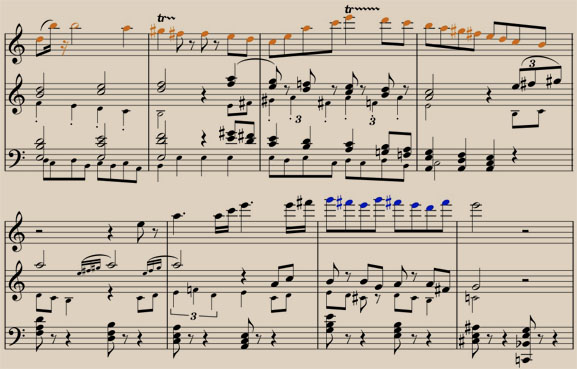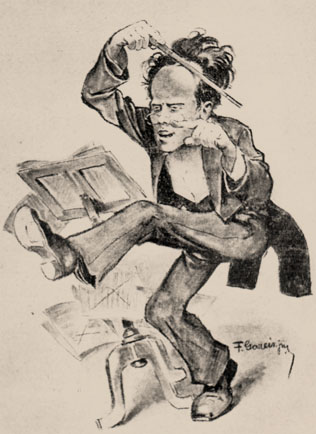Forced Marches
Farewell
Mahler's Methods

As the energy of the Rondo-Burlesque reaches its crazed climax, Mahler drops in snatches of famous marches of the Empire often used for celebrations and festivals:
-
He tosses whole phrases of Strauss’s iconic Radetzky March into his musical stew.
-
As director of the Vienna Opera, Mahler refused to stage a second-rate opera based on the life Hungarian patriot Rákóczy. So it’s only fitting that he also threw in fragments of the infamous Rákóczy March.
-
Screaming above the orchestral maelstrom, they seem to tease and taunt (In the score extract shown here, the Radetzky March is highlighted by orange notes, the Rákóczy by blue). Did the intrigue and spite that eventually played a part in Mahler leaving the Vienna Opera find an ironic reflection here?

-
In the Ninth Symphony's Rondo-Burleske, ideas appear and disappear like bubbles in boiling liquid. The music is as quirky in its sense of key as it is resourceful in part–writing, illustrating Mahler's maxim "Variety and contrast! That is, as it always was, the secret of effectiveness!" Is Mahler challenging his critics with music that is indeed “too clever by half"?


